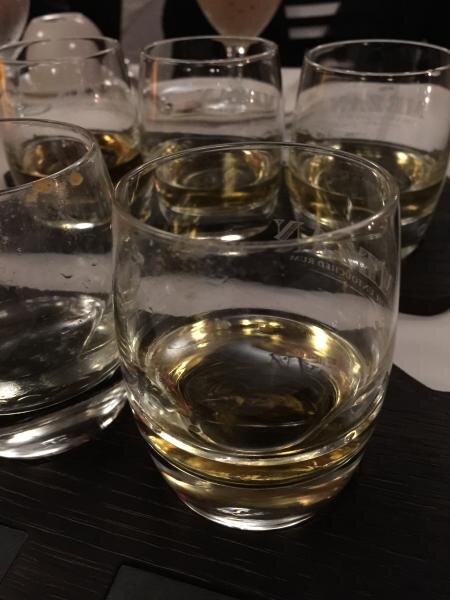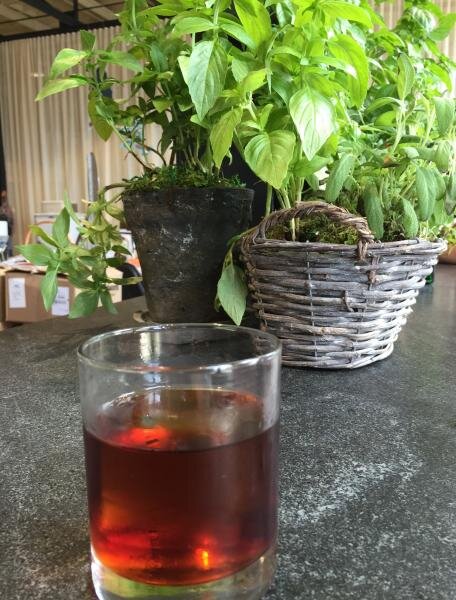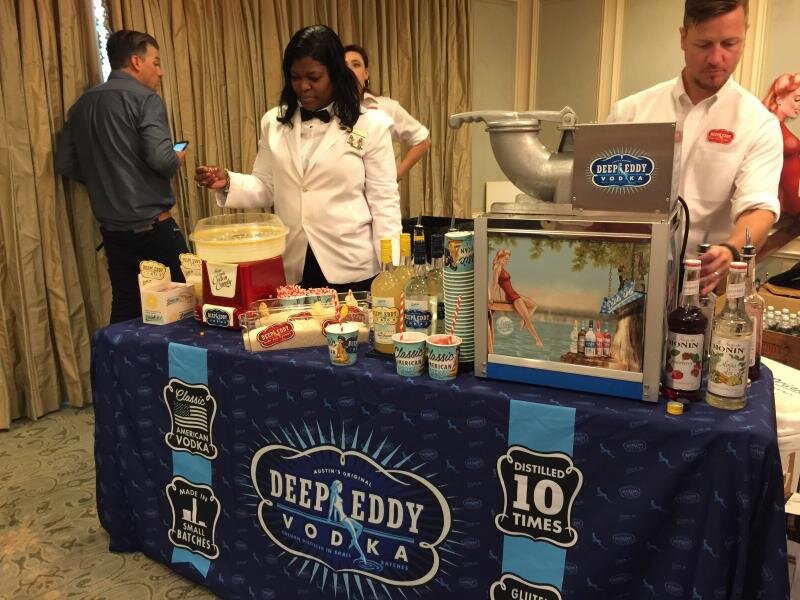Sales of the Cocktail

This year Tales of the Cocktail seemed to speak first to the liquor, spirits and bar businesses, and fans of fine drinking second.
In previous years at Tales of the Cocktail, I’ve heard stories of rogues worthy of Elmore Leonard. I’ve heard from someone who managed water and ice for a pop-up bar at Burning Man. This year, I listened to the argument that non-alcoholic is the new vegetarian, and that “the future of our business lies in non-alcoholic” (due in no small part to the high profit margin on NA drinks). Cocktail historian David Wondrich gave a quick history of bars in New York City, focusing on the development of drinks and the personalities who came up with them. The single-named Willard popularized the mint julep not because he invented it, but because he perfected it in New York after a Kentuckian asked him for one once. New York writers named his the top mint julep and because of that, his reputation grew. Wondrich described a New York in the 19th Century with an anything-goes nightlife, including tales of bartending legend Jerry Thomas who had a shooting gallery in the bar where drinkers gambled as they shot against the house’s sharpshooting women.
Jacob Briars and Simon Ford similarly quick-sketched cocktail history in their talk on the International Barfly’s Bucket List—a list of bars around the world that excel at something or are noteworthy because they once did. The Raffles in Singapore made their list because it is the home of the Singapore Sling. Unfortunately, its current version is not very good because, they decided, it didn’t have to be. Busloads of tourists show up like clockwork to fill and refill the bar regardless of the cocktail’s quality. Still, they decided, The Raffles “is worth it because it’s beautiful.”
Other bars on their bucket list features a number of New Orleans bars including Kingfish (for a mint julep from mixologist Chris McMillian) and the French 75 Bar for keeping that drink alive (“Can I get one of those bigass French 75s, please?”). Out of town, a few of their favorites include the King Cole Bar in New York City (home of the Bloody Mary, which helped introduce vodka to America), Harry’s Bar in Venice (the home of the bellini, and one of the few good places to get the drink), Accademia Cachaça in Rio (for its remarkable Cachaça collection), and Musso and Frank’s in Las Angeles (“Old cocktails and old steaks being served by old men. You feel like a man when you drink a martini there”).
But this year, I heard fewer panels for the cocktail enthusiast like that than I had in the past. Tales of the Cocktail’s programming balance seemed to have shifted toward the industry—a natural move and one that has likely been underway for a while, but this year it seemed to have hit a tipping point. More than an occasion to talk about the culture surrounding cocktails, this year’s Tales never stopped selling them. In tasting rooms and panels, spirits vendors were pitching not only new and unusual spirits but even such familiar drinks as Glenfiddich. Covering Tales of the Cocktail this year was far more about listening to sales pitches, though it was done with drinks in your hand.
Sometimes, the listening was fairly painless because people were making interesting drinks. In a room of run by a number of Texas-based businesses, I had a great, spicy cocktail made with Cazadores Tequila Reposado, red bell pepper juice, lime, and ginger juice; and a peach and pomegranate Collins made with Waterloo Gin. In that room, a drink made with Crown Royal’s apple-flavored whiskey seemed sad and out of place. I wasn’t sure what was Texas about it, and all I remember about the drink was that it worked to hide its Crown-ness.
That happened a few times, though. For every good good drink like an El Silencio Mezcal slushie with coconut and melon, I had a Monkey Shoulder blended scotch whiskey that tried to make scotch palatable to those who don’t like scotch, or something made with Sandeman port that was so sweet that the port was lost.
In the past, one of Tales’ signature events was its spirited dinners—dinners in local restaurants with menus paired with cocktails made with one spirit or family of spirits. This year, I attended one at Dickie Brennan’s Steakhouse with Mezan rums, and it began promisingly with a cocktail by mixologist Warren Bobrow that starred Mezan XO and freshly squeezed broiled grapefruit juice. Everything about it is what I love about Tales of the Cocktail—its improbability, its tastiness, and even its name. Bobrow called it “An Offer of 250 Jamaican Dollars”—a phrase he nicked from writer Robert Louis Stevenson, as he does all his drink titles, he said that night. The title had a logic because that sounds like a lot of money but in fact it’s nothing, and all that nutty, personal creativity is Tales at its most compelling.
The rest of the night was fine—good company, good-enough food—but the drinks never hit that high water mark again as we were served the Mezan XO, Mezan Jamaica 2000 and Mezan Panama 2004 neat with the dinner courses. The XO was closer to cognac than what you’d expect from a rum, and the Panama 2004 had the most conventional flavor profile. Each was enjoyable, but none worked particularly well with food. They didn’t work against it, but none were as independently satisfying as Bobrow’s cocktail.
This year, an entire lunch-time drink-and-dine series was added as well. The upside: If you’re going to listen to people’s product pitches, at least you get the comfort of a restaurant and something to gnaw on. The downside: The lunches completely take you out of the activities at the Hotel Monteleone and Royal Sonesta. I attended one sponsored by Jägermeister at Purloo in the Museum of the American Cocktail, where Jägermeister set itself the task of dealing with an interesting problem.
Other spirits would kill to be so well-branded, but Jägermeister is known as a party starter (and beginning-of-the-ender) for twentysomethings looking to get messed up—not quite the prestige reputation that companies court. Friday afternoon, a number of bartenders tried to show how mixable it was, and they succeeded in varying degrees. Equal parts rye and Jägermeister was better than it likely sounds, and it worked particularly well in a cocktail mixed with mezcal. I paid for my drinks though, when before the sampling and lunch we were given a powerpoint presentation on how Jägermeister is made that included tasting it at different stages in the process. If the opportunity to similarly sample the unfinished drink avails itself, go shopping. Watch television. There are a few stages you really don’t want to experience.
As for the rebranding challenge, it likely will and won’t happen. Bored mixologists will eventually find their way to it to see what they can do when they need a challenge to recharge creative batteries, and that’s who they’re talking to. Cocktails may be bigger than ever in America, but there remains a limit as to how many people are ready to think of fine drinking in the way that they think of fine dining. For most of the country, a cocktail is a blank-and-blank, and Jägermeister is a shot to blast down, not taste.
The shift in Tales' apparent priorities changes the story in the process. Covering it means thinking as much about the content as its delivery, reviewing the pitch as much as the pitched. The winners made the pitch seem like we were having a conversation--the guy I talked to about pecan as the hot ingredient from Treaty Oak Distilling in Austin--or they embraced the performance--the guy who made me a Hendrick's gin and Fever Tree tonic, serving it from a teapot. Deep Eddy Vodka Distilling--also from Austin--brought a sense of event, complete with swing dancers and cotton candy. If this is going to be about selling, let's have a good conversation or a good show.









